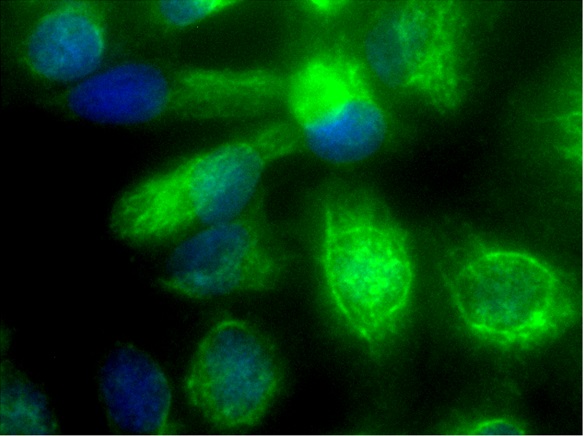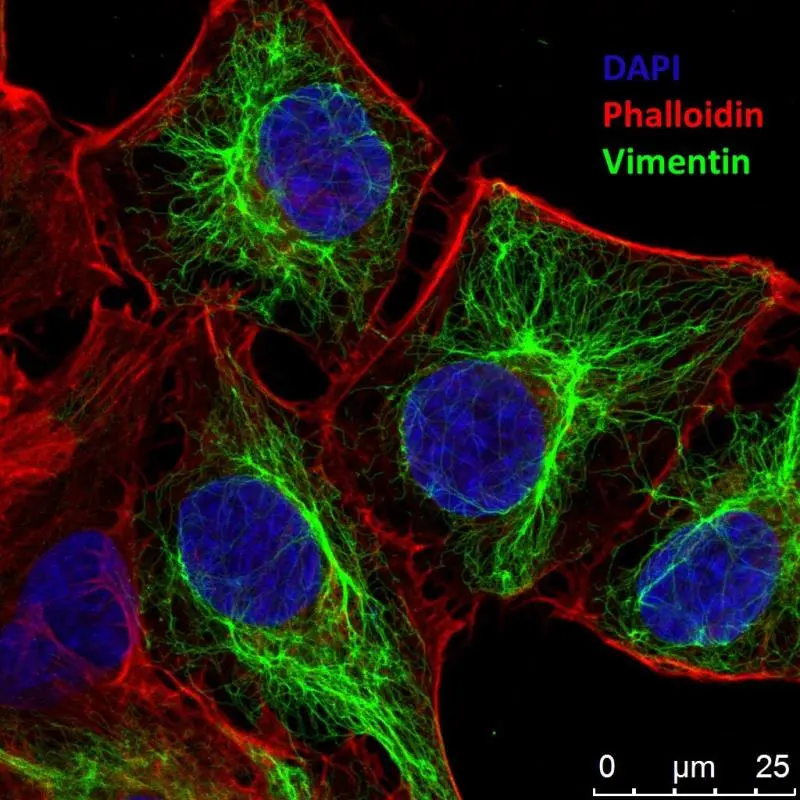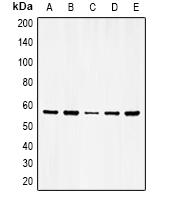Vimentin antibody [VI-RE/1] (APC)
GTX23974-07
ApplicationsFlow Cytometry
Product group Antibodies
TargetVIM
Overview
- SupplierGeneTex
- Product NameVimentin antibody [VI-RE/1] (APC)
- Delivery Days Customer9
- ApplicationsFlow Cytometry
- CertificationResearch Use Only
- ClonalityMonoclonal
- Clone IDVI-RE/1
- Concentration0.1 mg/ml
- ConjugateAPC (Allophycocyanin)
- Gene ID7431
- Target nameVIM
- Target descriptionvimentin
- Target synonymsvimentin, epididymis secretory sperm binding protein
- HostMouse
- IsotypeIgG1
- Protein IDP08670
- Protein NameVimentin
- Scientific DescriptionThis gene encodes a type III intermediate filament protein. Intermediate filaments, along with microtubules and actin microfilaments, make up the cytoskeleton. The encoded protein is responsible for maintaining cell shape and integrity of the cytoplasm, and stabilizing cytoskeletal interactions. This protein is involved in neuritogenesis and cholesterol transport and functions as an organizer of a number of other critical proteins involved in cell attachment, migration, and signaling. Bacterial and viral pathogens have been shown to attach to this protein on the host cell surface. Mutations in this gene are associated with congenital cataracts in human patients. [provided by RefSeq, Aug 2017]
- Storage Instruction2°C to 8°C
- UNSPSC12352203
References
- Residual periodontal ligament in the extraction socket promotes the dentin regeneration potential of DPSCs in the rabbit jaw.Read more
- Lapine periodontal ligament stem cells for musculoskeletal research in preclinical animal trials.Read more
- Comparison of surface markers between human and rabbit mesenchymal stem cells. Lee TC et al., 2014, PLoS OneRead more



![FACS analysis of Jurkat cells using GTX17723 Vimentin antibody [VM452]. Black : Blank Grey : Isotype Control Green : Primary antibody](https://www.genetex.com/upload/website/prouct_img/normal/GTX17723/GTX17723_20200115_FACS_1470_w_23060620_227.webp)
![FACS (intracellular staining) analysis of ESS-1 cells using GTX23974 Vimentin antibody [VI-RE/1]. Negative control : human lymphocytes](https://www.genetex.com/upload/website/prouct_img/normal/GTX23974/GTX23974_20191025_AP_006_179_w_23060722_663.webp)

